
HOME | Astrophotos | Astro Science | Equipment | Resources/Links | Contact Us |
August 21, 2017, Total Solar Eclipse
For us, the 2017 Total Solar Eclilpse could not have turned out better! We decided not to travel and stayed at our observatory on the Oregon Coast. It was a big risk given the prospects of rain or clouds. But we lucked out. The fog disappeared about 15 minutes before C1 where the moon just begins to eclipse the Sun. And it stayed crystal clear throughout the entire 2-1/2 hour event!
If you want to see some of the "science" experiments and fun projects we did during the 2-1/2 hr event, click below:
www.CountdownToEclipse.net/photos
All six of the cameras and our three telescopes worked awesome! We've included some of our favorite photos below.
This is a montage of photos that I took during the 2-1/2 hr event.
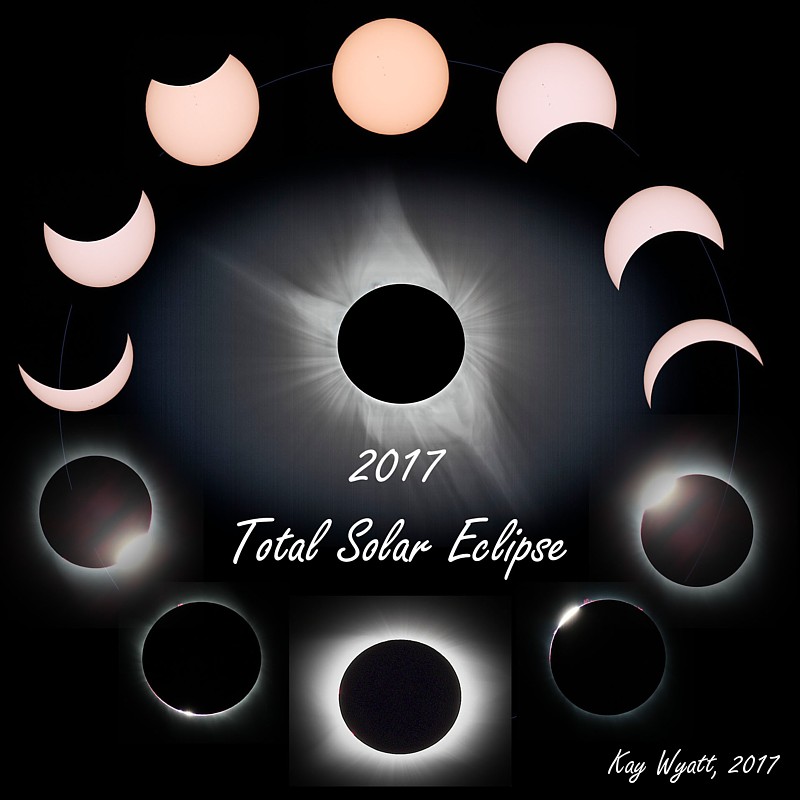
During totality it is impossible to get a great photo with only one exposure. That is because there are so many features of the Sun, each requiring a different exposure setting. So, I shot a dozen photos with different exposure settings and used Photoshop to "stack" or add them together. In this way, you can get the entire Corona in all its glory.

This photo is similar to the one above. However, I included a couple of long exposure (up to 2 seconds) photos which show the "Earthshine" on the moon. That means that the dark new moon reflects the shine of the earth so that we can see its face.

Here is a photo that I shot just a second after totality ended. It shows the Bailey's Beads. This happens when the moon grazes by the sun during a solar eclipse, allowing the rugged lunaar limb topography to show beads of sunlight through the valley's and craters of the moon. It also shows solar prominences where hot plasma of electrically charged hydrogen and hellium shoot out from the Sun's surface. And, you even see the Sun's chromosphere which is a reddish gaseous layer immediately above the Sun's photosphere. Together with the Corona it comprises the Sun's atmosphere. 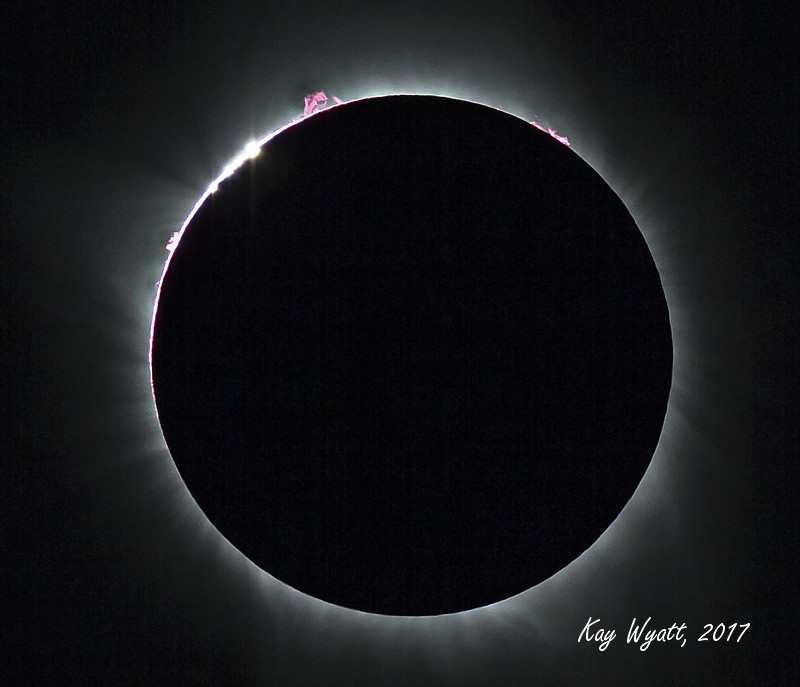
This photo show the eclipse a bit later as more of the Sun is exposed. This is the beginning of the "diamond ring". The Sun's corona forms the ring and the bright burst of light from the Sun is the diamond.
And, still later as more of the Sun exposed we say goodbye to the eclipse and greet the Sun in all its glory.

The map below shows the path of the eclipse through the United States. The longest duration of totality is along the thick red line. The longest duration of the eclipse will be near Carbondale, Illinois, at about 2 minutes 40 seconds. When the eclipse approaches the Oregon Coast near Lincoln Beach the duration will be about 1 minute 59 seconds. But even if you aren't in the thick red line, you will still see the sun partially obscured! The map below shows what percentage of the sun will be obscured in your area!
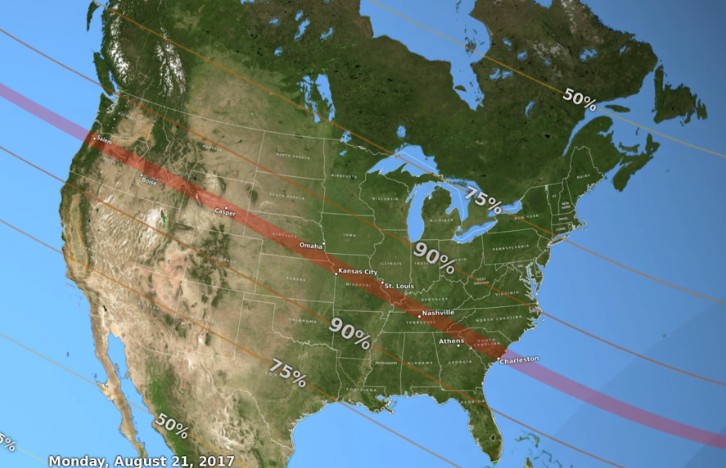
The map below shows the path of the eclipse through the Oregon Coast. The longest duration of totality is along the red line. It is just a couple miles north of our home in Depoe Bay! As long as you stay between the blue lines you will see a total solar eclipse. Beyond the blue lines you'll see a partial eclipse.
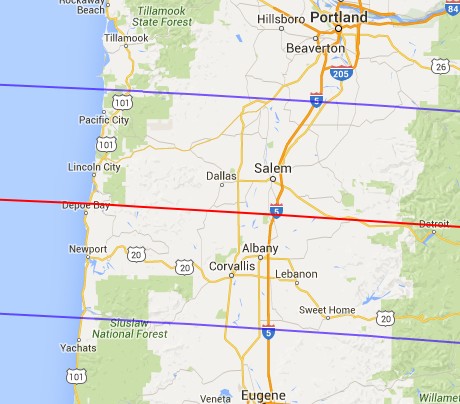
The detail below shows the path just north of our home. The balloon shows the time to see the eclipse. At Lincoln Beach the eclipse will last 1 minute 59 seconds.
NOTE: Subtract 7 hours from the times below. They are in UTC or Universal time Coordinates.
So, at Lincoln Beach, the maximum eclipse will be at 10:17am.
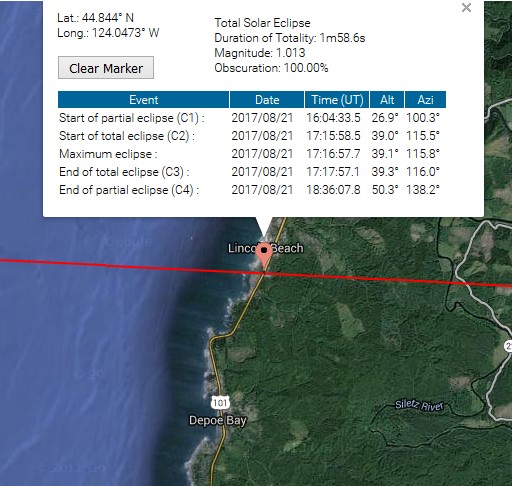
I was asked to host a weekly radio show for the total solar eclipse. This link will take you to the topics I discussed and a few of the resources that I shared with my listeners.